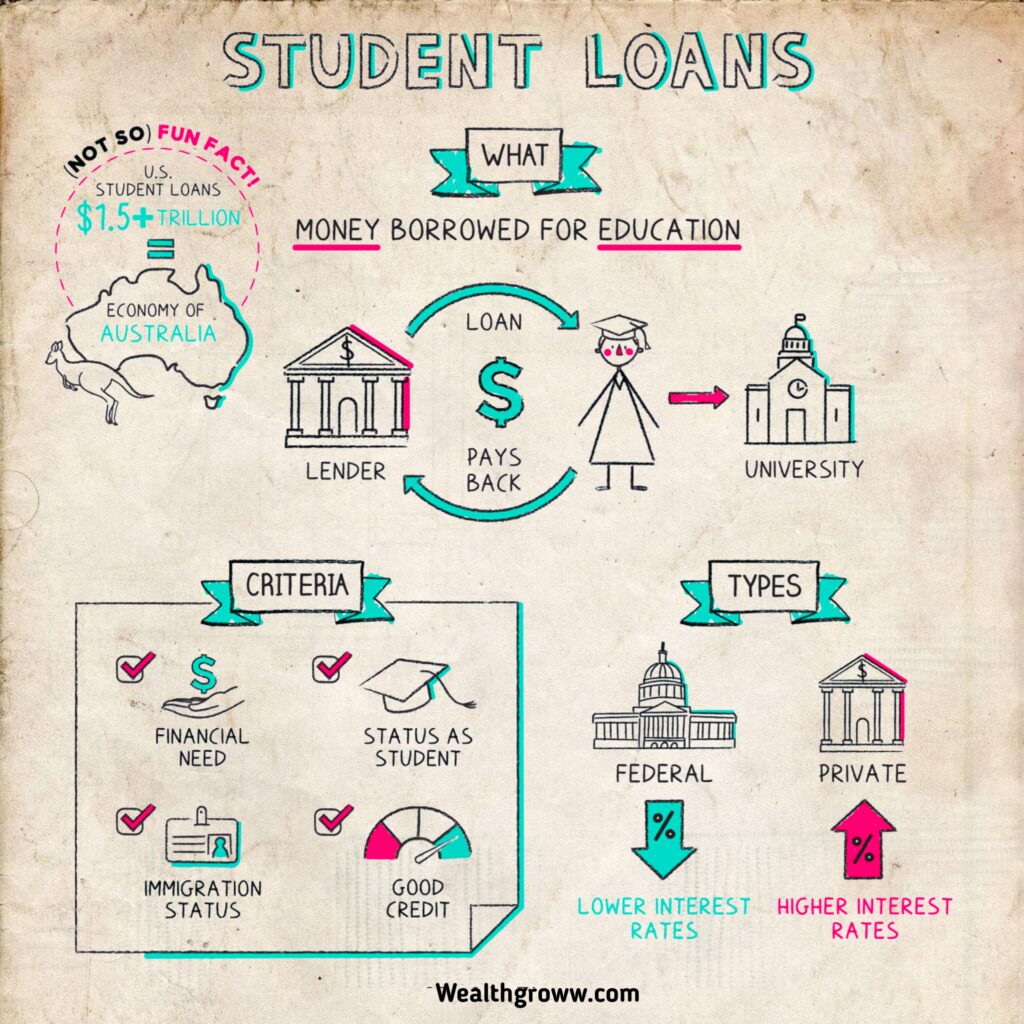
Student Loan
Old college try
Student loan have a number of varieties and it’s not necessary to pay it for education only. Well the name imply that it is for students only but even parents can avail it for their kids education.
Types
Federal and private two types of student loans are seen. Federal loans are created by federal government and therefore have few varieties:
- Interest doesn’t accrue on these loans while you’re still in school.
• Direct unsubsidized federal loans—low-interest-rate loans to students who don’t necessarily demonstrate financial need.
- Interest does accrue on these while you’re still in school.
- Parents have to start making payments on the loans while their child is still in school.
- This program expired in 2017 but could be reauthorized.
Federal vs. private loans
To make well-informed decisions, it is essential to have an understanding of both federal and private loans.
Private loans are not only generally more costly than federal loans, but they also tend to be less lenient if you encounter difficulties with repayment in the future.
If you want to make additional payments or willing to pay your loans early for this many private loans charge a fee. Federal loans don’t charge prepayment fees.
How to qualify
Depending on the lender or type of loan, you may need to show:
- Financial need
- Status as at least a part-time student
- Citizenship or immigration status
- A good credit history
For federal loans and certain other forms of aid, you will need to complete the FAFSA (Free Application for Federal Student Aid) annually during each school year to determine your eligibility for various loan options.
Conclusion
Many families can’t fully cover the cost of college or grad school with savings, income, grants, and scholarships alone. Student loans help to fill that gap. The federal government sponsors a number of types of loans, while private lenders, such as banks and credit unions, also offer student loans. Federal loans are often considered a safer bet than private loans due to their typically lower interest rates and stronger protections when it comes to repaying.
Fun facts
- With a total exceeding $1.5 trillion, if the student loans of Americans were considered a country, they would rank as the thirteenth-largest economy globally, approximately equivalent to the size of Australia.
- More than half of student-loan borrowers wrongly assume their payments will be based on their income, and almost 10% wrongly believe they won’t have to pay off their loans if they can’t find a job.
Key takeaways
- Student loans are monetary resources borrowed to cover educational expenses.
- Federal and private are two main types Federal loans are typically less expensive and come with extra protections for borrowers.
- Which will depend on the type of loan you will allocate for your financial needs, your creditworthiness, your student status and your immigration status in order to qualify for a loan.
- Completing the FAFSA annually while you are in school can assist in determining the types of loans that you or your family may be eligible for.

